Part III. Italy
Chapter 49. The Chapel of San Bartolomeo [March 18, 1348]
Cultural Explanations
 |
Part III. Italy Chapter 49. The Chapel of San Bartolomeo [March 18, 1348] Cultural Explanations |
|
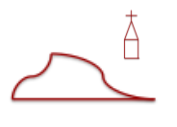 |
In this chapter, Bávlos and Buonamico make art for the chapel and hear about the miracle that brought Brother Bartolomeo to the wilds. |
| Mount Morello, Chapel of San Bartolomeo |
In this chapter, Bávlos hears about the miraculous painting of the Virgin at the Church of the Most Holy Assumption in Florence. The legend of the creation of the face are retold according to church documents. It is said that even Michelangelo eventually came to the chapel to examine the face, declaring it undoubtedly the work of an angel. In the centuries since, however, the face has been touched up to keep it from fading, and no one is quite sure whether the touch-ups do credit to the earlier image.
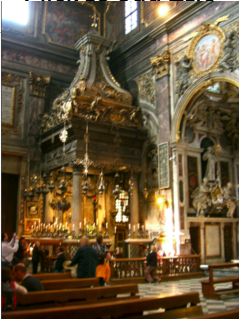 |
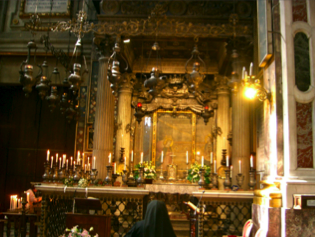 |
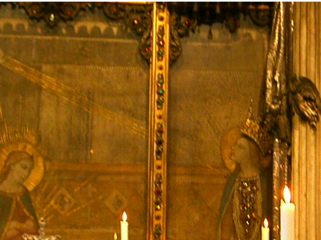 |
Above the ornate chapel containing the painting as it looks today. Mass is held regularly at the chapel altar, where, in deference to the image, the priest actually faces the painting rather than the congregation. (The practice of facing away from the congregation in the Latin rite was ended for the most part in the liturgical revisions of Vatican II; facing the congregation was said to underscore the collective roles of priest and parishioners in effecting the mass.) Numerous candles and gifts of flowers are still constant parts of the decor at this chapel, and brides continue to bring their bouquets to the chapel after their weddings.
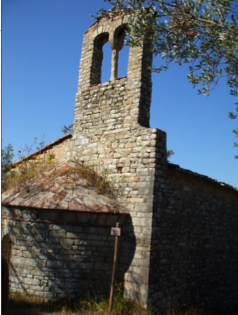 |
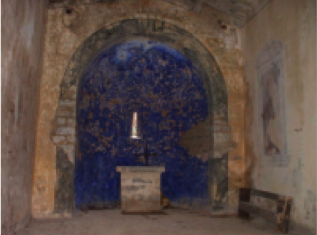 |
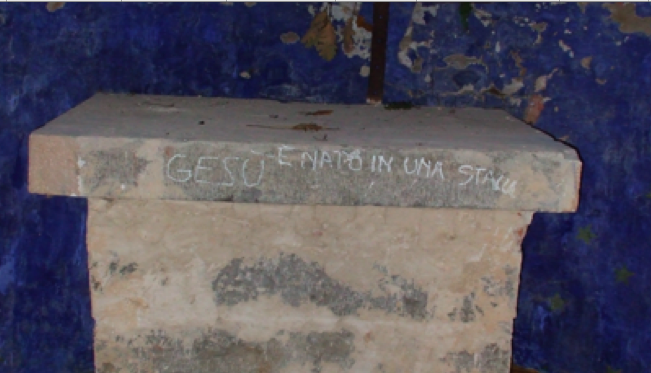 |
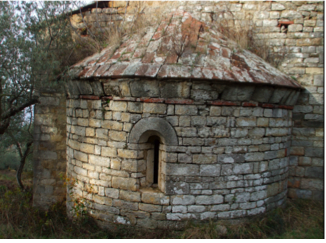 |
The Chapel of San Bartolomeo as it looks today. No longer regularly used as a worship space, most of its furniture and decorations have been removed and transferred to other churches in the nearby city of Sesto. A simple altar remains, in front of a much-deteriorated wall of blue studded with stars. In the photo at the right, someone has scratched onto the altar the words "Jesus was born in a stable," a reference to the quiet and humble sanctity of the place.
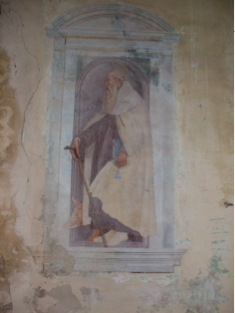 |
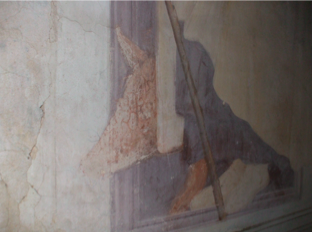 |
The fresco to the right of the altar is the only major piece of art that survives in situ in the chapel. At the foot of the saint, one can see the head and front paw of a pig.